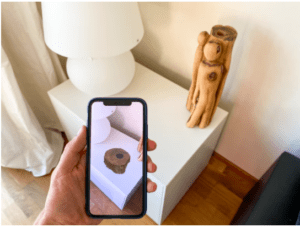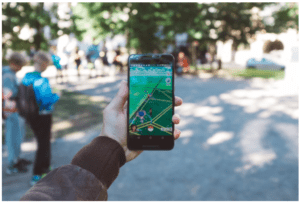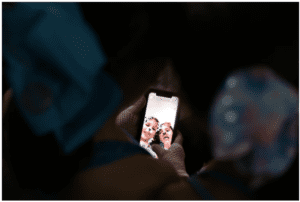Augmented reality is defined as “an enhanced version of the real physical world that is achieved through the use of digital visual elements, sound, or other sensory stimuli delivered via technology.”
Augmented reality (AR) is not a new concept. However, the technology really took off in 2020 amidst the COVID-19 pandemic. Brands using AR technology are seeing an increase both in user engagement and conversion rates, making it really worth their while.
In a past article, we focused on virtual try-on—a simple and trending way to try on fashion items through augmented reality. Augmented reality has quite a few uses beyond what we discussed in that article including medical training, business logistics, interior design, and education. In this article, we’ll be focusing on some real-life examples of augmented reality brought to life by popular brands.

-
IKEA Place: iOS mobile app
IKEA took full advantage of the benefits of augmented reality in an attempt to help shoppers find the best fit for their homes. IKEA Place makes it easy for users to see how different products they’re looking to buy will look like in their homes.
When it first came out, the mobile app only allowed users to place virtual furniture in a specific place in their homes. Now, IKEA Place has evolved into a full 3D experience where customers can design a whole room. We’re definitely excited to see what IKEA comes up with next using augmented reality!
-
The Weather Channel: studio effects
The Weather Channel’s news studio has been around for almost four decades. The studio is always looking for new ways to engage and educate its viewers, which is why it chose to use AR for its studio effects, taking the audience into the eye of the storm.
This technology makes it possible for the broadcasters to show people what weather phenomena (such as Hurricane Florence in 2019) really look like, as well as the dangers they can pose. For example, you can see anchor Jim Cantore explain the dangers of an ice storm through augmented reality here.
-
Nintendo and Niantic: Pokémon Go

You have probably heard about this groundbreaking mobile game. Pokémon Go is one of the pioneers when it comes to the use of augmented reality. Released in 2016, the game is still highly popular bringing in $1B in 2020 alone.
Through their phone, users can see and catch various Pokémon that appear across their home cities, collect items at PokéStops and Gyms that are placed in specific locations, complete tasks, battle other Pokémon, and many other activities. The use of augmented reality has proven to be very effective in creating high user engagement. Users are not only very engaged with the game, but also with the world around them, given that the game is anchored on the physical world.
-
Walmart: employee mobile app
Walmart’s in-house team designed Me@Waltmat, a mobile app that focuses on employees and incorporates machine learning and augmented reality.
The app includes features such as shift scheduling, pay monitoring, instant employee communication, and a voice-activated personal assistant. Moreover, the app is used to check inventory and make sure items are restocked promptly.
-
Amazon: hair coloring
Among its many ventures, Amazon has launched a hair salon that lets you preview what your hair would look like with different hairstyles and colors through augmented reality. Through a tablet embedded on a mirror, customers are able to see how different shades and hairstyles would look like on them using the front-facing camera. Customers can also easily shop using their smartphone to scan QR codes on the wide array of products showcased in the salon to then receive them at home.
Amazon is no stranger to using augmented reality in this way. Back in 2019, they introduced the “Live Mode” feature that lets mobile users try on different shades of lipstick.
-
Snap Inc.: Snapchat

Snap Inc. also caught on to augmented reality early on, starting to experiment with it back in 2015.
The company’s messaging app is not only famous for messages that disappear after a short time, but also for offering the possibility to add augmented reality filters through its “Lens” feature. Users of the mobile app can use lenses to transform themselves and the world around them. For example, you can turn yourself into a dog that sticks out its tongue, do a face swap or add a golden butterfly crown.
-
Magicplan: home renovations
This mobile app makes it easy for construction managers to create and share floor plans, field reports and estimates.
Through its augmented reality Room Scan feature, magicplan easily scans any room, automatically adding and detecting corners, even if obstructed. The mobile app not only makes contractors’ lives easier, but it is also beneficial to homeowners looking to renovate their homes as they can get all the information they need to make decisions regarding home renovations quite quickly.
Final thoughts on Augmented Reality
Augmented reality is here to stay. It is making our lives easier in many ways, saving us time and providing entertainment. The examples above are just the tip of the iceberg when it comes to what augmented reality is capable of. We are looking forward to seeing what else this technology has in store!





